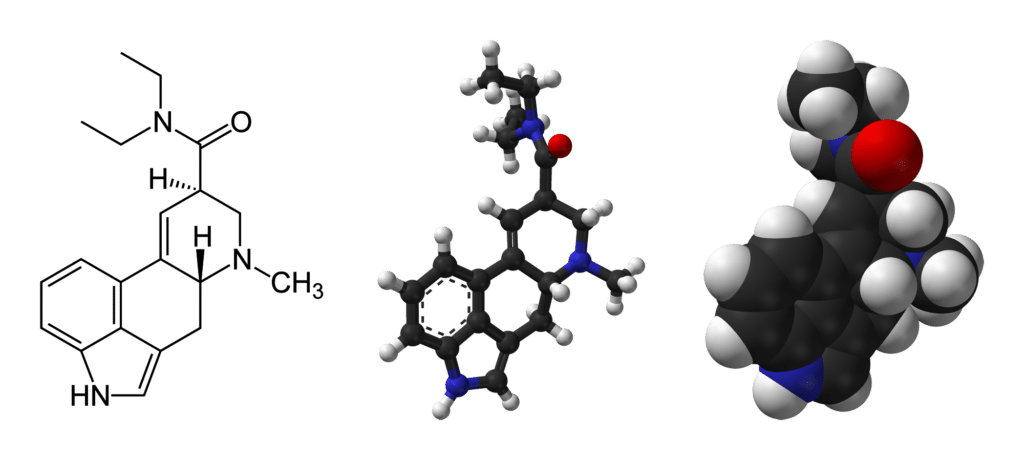Holotropic Breathwork
What is it & Why it is Needed
CONTENTS
Holotropic Breathwork is a powerful psychospiritual transformative practice, originally developed by Stanislav and Christina Grof. Another way of looking at it would be as an experiential psychotherapeutic technique. Although Dr. Grof often refers to Holotropic Breathwork in his writings as “Holotropic Therapy”, we usually prefer to talk about it primarily as a tool for self-exploration, rather than a psychotherapeutic technique per se. This is because Holotropic Breathwork has proven to be of significant benefit not only in times of psychological difficulty, but also when we generally feel well, but still experience curiosity, a yearning for adventure and for a deeper understanding of ourselves, our relationships, and the world around us. Some of us may even develop an interest in the possibility of opening ourselves up experientially to a transcendent dimension of reality, in which case Holotropic Breathwork will also be of exceptional value. Thus it follows that psychological difficulty (or even dysfunction) on the one hand, and spiritual awakening and enlightenment on the other hand, may well be seen as two extremes of a single spectrum of human mental functionality.
What Does “Holotropic” Mean?
Now, let’s take a closer look at the terminology. The central concept of the whole process is captured in the word holotropic. It consists of two Greek words: “όλο” [holo] meaning “whole”, and “τρεπειν” [trepein] meaning “trend”. The word “holotropic” thus means “trending towards wholeness”.[1] It reflects the fundamental idea that, as human beings, we start off in a state of fragmentation and then aspire to achieving ever greater degrees of wholeness, or completeness. This notion pertains primarily to our self, or, generally speaking, to the inner experiential reality with which we subjectively identify. This idea of a holotropic process being intrinsic to our human nature is consistent with many psychological schools, notably with the work of Carl Gustav Jung, with Developmental Psychology (Piaget), Humanistic Psychology (Maslow), Integral Psychology (Wilber) and Transpersonal Psychology in particular. Perhaps even more importantly, it widely resonates across both Western and Eastern philosophical schools, and is central to all great spiritual traditions worldwide.
So, how does Holotropic Breathwork fit in here? It’s quite simple and natural. Since we now know that there is an intrinsic, ever-active tendency in us to move towards ever greater levels of completeness (or integrity), and we also know that this movement towards ever higher levels of wholeness can be viewed as analogous to moving towards higher levels of health (psychological, but also physical), the only question that remains is: how do we remove any obstacles which hinder this process?
This is where Holotropic Breathwork comes in. Holotropic Breathwork is a sophisticated, yet startlingly simple and elegant method for temporarily removing a substantial part of the obstacles that usually block, or at least significantly hinder the self-healing process naturally occurring in our organism. It thus opens up a window of opportunity for accelerating our overall development. You will learn more about how this is achieved in the chapter on the method of Holotropic Breathwork.
Psychospiritual Transformative Practice
We previously stated that Holotropic Breathwork is a psychospiritual transformative practice. So what do we mean by that? A couple of things can be derived from those words. Firstly, there is the connection of the psychological and spiritual domains of our existence. When we think of the psychological component of ourselves, what we usually mean is actually the psychodynamic aspect of our mind, in other words the interplay between the various parts of our personality – memories, motivations, intentions, patterns of emotions and thoughts – all of these mostly emerging freely from the depths of the unconscious mind. As we all know from personal experience, these internal parts can sometimes conflict with one another, and the degree to which they do, largely determines our overall wellbeing. Most of us also know that some of these internal conflicts can be really persistent. The introduction of expanded (holotropic) states of mind can, if well facilitated and integrated, add a very wholesome, new dynamic to this whole situation. Often it is experienced as introducing “the missing piece of the puzzle”. Others may describe it as adding a missing cogwheel into the workings of a clock, which can now start functioning and moving forward: a developmental process is activated. This is where transformation comes in. Depending on the unique conditioning of every person, this developmental process may sooner or later result in a major transformational event, marked by a radical shift in perceptional capacity, opening the gateway for the individual to a whole new, vast dimension of experiential reality. This radical event in a human being’s life has been recognized across many cultures and spiritual traditions as the initial spiritual opening (not to be confused with awakening, or enlightenment, in the sense of advanced stages of human spiritual maturity).
Experiential Psychotherapeutic Technique
Finally, let’s complement our understanding of what Holotropic Breathwork is by examining the term experiential psychotherapeutic technique. Nowadays, the popularity of all kinds of psychotherapeutic approaches and techniques is on the rise, so everyone roughly knows what we are talking about when discussing Psychotherapy. Perhaps we could say that it all started already in prehistoric times, where the predecessor of present-day Psychotherapy would be an intimate conversation with a wise, elderly member of the family or community, perhaps one’s grandmother, a priest or a shaman. People would naturally seek out the kind, empathic and accepting presence of their most experienced and trustworthy peers, sharing with them their heartaches, and, by virtue of expressing themselves and sharing their pain, finding relief and inner reconciliation. All this has been preserved in many cultures up to the present day. The value of this kind of simple sharing of one’s suffering within a context of trust and respect has lost nothing of its important healing power.
In modern times, the world has seen much systematic development in the field of Psychotherapy, particularly after Sigmund Freud and Carl Gustav Jung contributed their groundbreaking observations, theories and psychoanalytic methods. A substantial part of this evolution occurred in the work of Stanislav Grof, who became acutely aware of the limitations of the mostly verbal therapeutic approaches of his forerunners. Drawing on his expertise in Psychology and Psychiatry, a remarkable acquaintance with an array of other scientific disciplines, knowledge about ancient indigenous shamanic traditions, Eastern spiritual traditions with their systems of transformative practices, Western mystical schools, as well as his own systematic clinical research with psychiatric patients, Grof eventually realized that, for any psychotherapeutic technique to be truly effective, it has to step out of the constraints of merely verbal (analytic) processing, and expand to include the realm of non-ordinary states of consciousness, where the healing process, if met with understanding and support, can take place on all the levels of our existence (bodily, emotional, conceptual and spiritual) simultaneously and spontaneously – in other words, through actual lived experience, rather than only by talking. The method of Holotropic Breathwork emerged out of this knowledge and understanding; the same kind of knowledge and understanding that the world’s indigenous shamans and authentic traditional healers have been safeguarding for millennia.
Is There a Need for Holotropic Therapy?
When it comes to emotional wellbeing, our psychological and physical health, most of us naturally understand that we need to keep those aspects of our lives in the best shape possible, in order to have a fulfilled and happy life. Most of us intuitively experience our bodies and minds as ourselves, and so it comes rather naturally that we wish to keep them healthy, strong and well-functioning, possibly free of suffering and capable of growth, development and regeneration. Everybody wants to be happy and healthy. So, yes, any kind of effective tool for promoting development and healing processes in us is undoubtedly good and useful.
But there’s more to it. Holotropic Breathwork, like any kind of authentic and effective spiritual practice, can provide benefits that wildly exceed the boundaries of mere individual health and happiness. Once we achieve a certain degree of inner integration, the wholesome effects of our practice begin to overflow naturally from our inner self into the world around us, through intention, speech and action. This principle has been well known for thousands of years in spiritual traditions and their systems of practices, such as Buddhism and Yoga. It’s the holotropic process at work, you see? Through exploring our inner realities, discovering increasing numbers of previously disconnected inner parts of ourselves, getting to know them, and including them into our ever more integrated, authentic self, we become increasingly whole – accepting both the bright and the dark aspects of the psyche into our maturing self.
But it doesn’t stop there! If we carry on with our practice, a true miracle begins to emerge right before our eyes, in our bodies and minds. As we continue gaining direct insight into the nature of consciousness itself [2], it becomes increasingly self-evident to us that what we previously saw as “out there”, “outside” or “other”, is actually an integral part of our expanding, conscious self – a truly Copernican revolution in how we perceive the world! Not only does this constitute a quantum leap in our personal freedom, since we now begin to see that it is actually our very own mind which creates the world we live in, but, even more importantly, since we now perceive the world as being a part of ourselves, we instinctively start to relate to the environment, Nature, and everybody around us, with the same intuitive care and loving attention that we would naturally pay to ourselves. This is the true benefit of holotropic practice. This is how humanity needs to take its next step forward.





